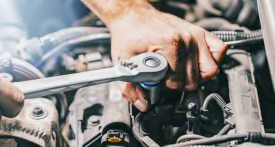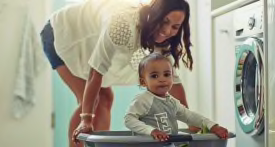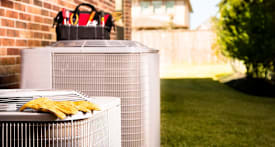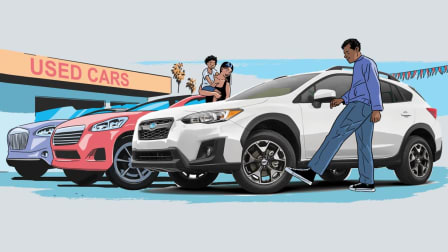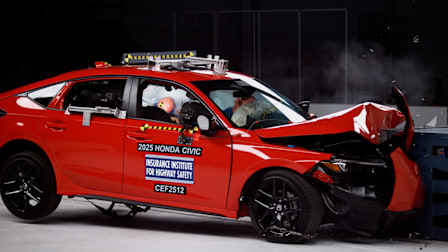Anyone Could Forget a Kid in a Hot Car, Research Shows
Most hot car deaths don't happen because of negligence. They're the result of a common memory failure that can lead to tragic consequences. Here's what parents need to know.
No parent thinks they’d forget their child in a hot car. But the tragic truth is that it can happen to anyone.
Since 1998, about 1,011 children have died in hot cars—and more than half of them were left behind unknowingly by their caregiver, according to NoHeatStroke.org.
But recent research shows that the daily stresses parents face can make these memory lapses more likely. Forgetting a child isn’t a negligence problem but a working memory problem, says David Diamond, PhD, a professor of psychology at the University of South Florida in Tampa. Diamond, a leading expert in cognitive neuroscience, has studied the role of memory in such tragedies.
“The most common response is that only bad or negligent parents forget kids in cars,” Diamond says. “It’s a matter of circumstances. It can happen to everyone.”
When Working Memory Fails
Diamond says the problem involves two parts of a person’s working memory: prospective and semantic. Prospective memory helps us remember to do something in the future, while semantic memory allows drivers to make the trip from work to home on autopilot, where they arrive without remembering clear details of how they got there.
Prospective and semantic memories work together to help us make changes to our routines; these changes can include things such as “drop off the baby at day care” or “stop for groceries on the way home.” When our working memory fails, such as when we’re distracted or stressed, there can be catastrophic implications, Diamond says. He gave examples of situations where critical safety steps were overlooked, such as a surgeon leaving tools in a patient, a pilot not setting the wing flaps for landing, and caregivers forgetting that there’s a baby in the car.
“The habit brain system is a great convenience that allows us to go into autopilot,” Diamond says. “The beauty of it is that we don’t have to remember every turn, but the problem is that it’s actually guiding our behavior. When it guides our behavior, it suppresses the other part of the brain that is supposed to remind us of additional information.”
“We have to accept the fact that our brain multitasks. And as a part of that multitasking, the awareness of a child can be lost,” Diamond says. “We have to accept that the human memory is flawed. That includes when loving, attentive parents lose awareness of their children when they are in a car.”
Diamond has studied many heatstroke cases and points to common factors: stress, sleep deprivation, and change in routine.
Many times when a child died in this situation, there was a change in the day’s routine, Diamond says. For example, a parent who wouldn’t usually be responsible for day-care drop-off may have had the task that day. Because our brains recognize a pattern for the day, this person would drive to work as usual, even though the baby was along for the ride. And unless there was an external cue, such as seeing the diaper bag or hearing the baby, the parent’s brain would continue on autopilot and could even create a false memory that the child is safely at day care, Diamond found. Sleep deprivation and stress can also increase the potential for a working-memory failure.
Conflicts between semantic and prospective memory are typical, Diamond says. His research has found that they happen to everyone—not just parents and caregivers—on almost a daily basis. The added stress, distraction, and sleep deprivation that parents often face can contribute to tragic situations.
What You Can Do to Prevent a Hot Car Tragedy
The first step is for parents and caregivers to understand that human memory is faulty and that these memory failures can happen to anyone. The key to avoiding such incidents is to use strategies aimed at overcoming memory lapses. “The strategies need to be child-specific,” Diamond says. “When you have a child in the car, do something unique.”
Here are six tips from the expert team that tests car seats for CR.
- Create safeguards. Set up an agreement with child care providers where you promise to notify them if your child is going to be late or absent. In return, they pledge to notify you if your child doesn’t arrive at the usual drop-off time.
- Set reminders on your phone to check with your spouse or partner to make sure they have dropped the child off.
- Always keep vehicles locked and keys out of reach from little hands.
- Create visual reminders. Place the child’s diaper bag, jacket, or hat in the front passenger seat.
- Force yourself to go to the back seat. Keep your backpack, lunch box, or briefcase there every day.
- Never leave a child unattended in a vehicle for any length of time, regardless of the outside temperature. Vehicles can quickly heat up to potentially fatal levels on even mild-temperature days.
“Education is very important, but education alone won’t end these tragedies,” says Fennell at KidsAndCars.org. “It’s going to take education along with technology to help our imperfect brains.”
You can also invest in a vehicle or child car seat with integrated reminder technology. (See our guide to rear-occupant alert systems) or SensorSafe from Evenflo.) Consumer Reports’ experts have evaluated these technologies and found that integrated systems that default to On, rather than needing to be activated by the driver, are the most beneficial. (The concern is that most parents don’t think a hot car tragedy could happen to them and therefore might not turn on a protective feature.)
“When my college-aged son was an infant, this almost happened to us,” says Jennifer Stockburger, director of operations at CR’s Auto Test Center. “My husband was responsible for dropping our son at day care one day, which was not his normal routine. He drove far past the day care, and only when our son made some noise did he realize his mistake. Even if you can’t imagine making such an error, I encourage parents to use the tips we provide to safeguard their children.”
Shopping for a Child Car Seat?
See our car seat ratings and buying guide.
Keeping Kids Safe From Hot Cars
Just how hot can the inside of a car get? On the “Consumer 101” TV show, Consumer Reports’ expert Emily Thomas, PhD, shows host Jack Rico how rapidly interior temperatures can rise—and what you can do to protect your kids.


